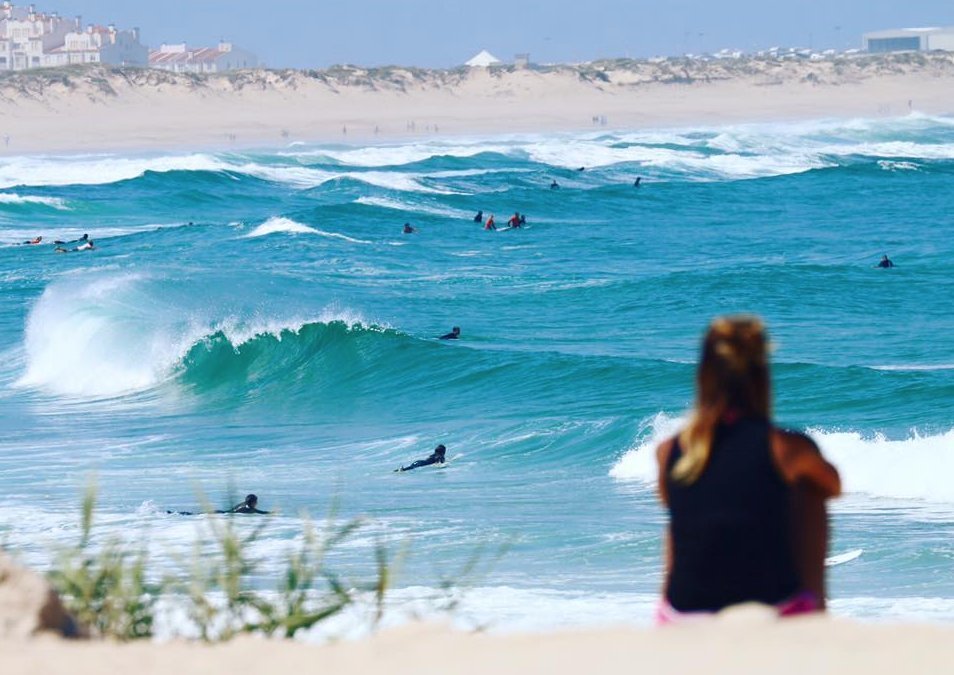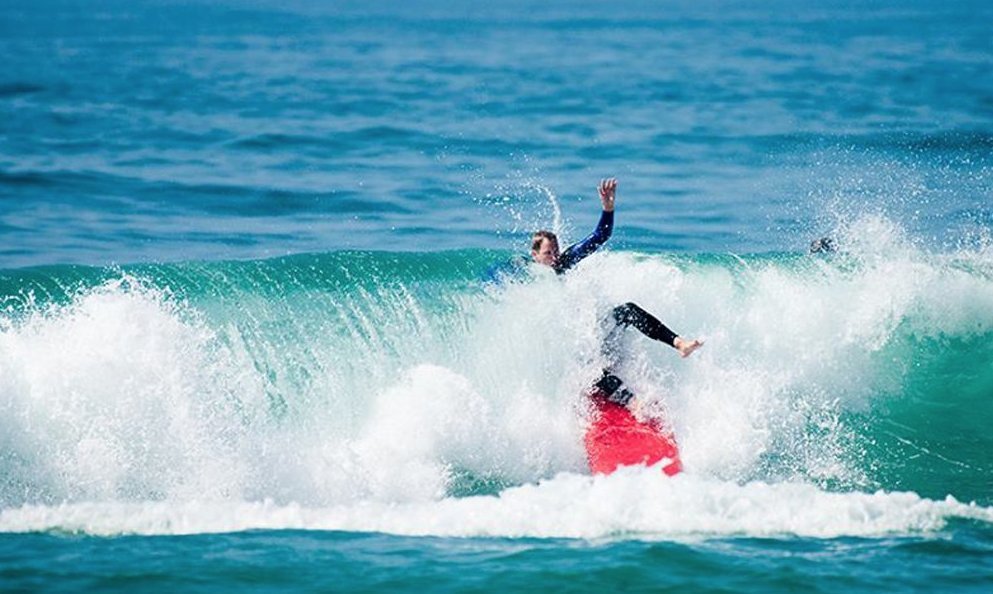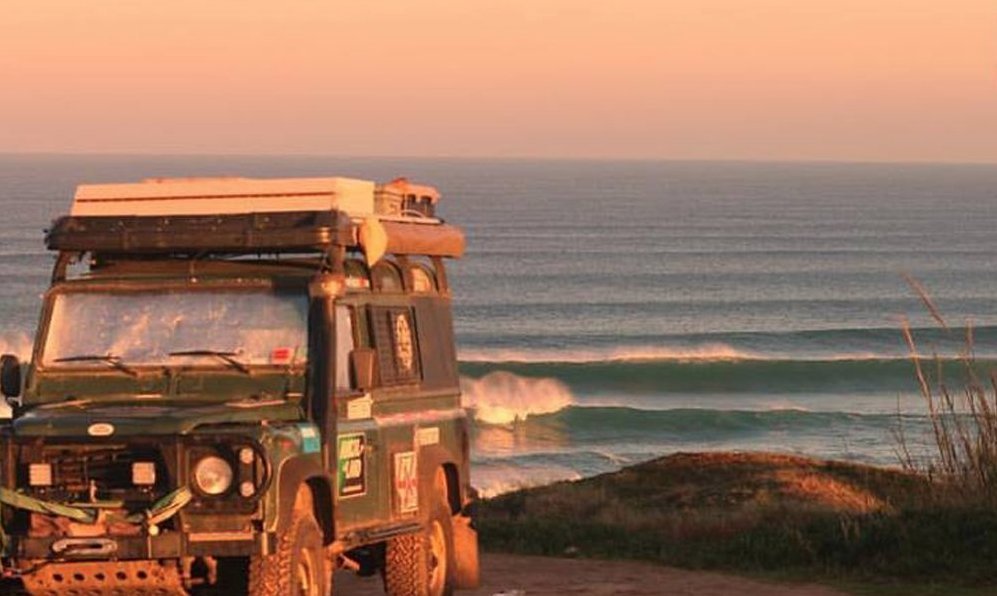Surfing is an outdoor water sport which is predominantly conducted on the shores of oceans and seas. In this sport, the athlete, usually referred to as a surfer, starts off at a certain distance away from the shore, and moves towards the shore standing on a surfboard, using the waves for propulsion.
Though surfing dates back to couple centuries, modern surfing originated in the early twentieth century on the Hawaiian islands, and professional surfing competitions did not start until 1975. Earlier surfboards were made of wood which made it heavier and bulkier. But current surfboards are made of fiberglass materials that makes it lighter and easier to carry.
The sport of surfing is completely based on the types of maneuvers surfers make while riding the waves. Some of the common types of maneuvers are, cutbacks, carving, floater, tube ride, and top-turn.

In professional surfing competitions, surfers are judged based on several factors: commitment, degree of difficulty, innovative and progressive maneuvers, combination of major maneuvers, variety of maneuvers, speed, power and flow of the ride. Each ride is adjudged by a panel of judges, and is awarded points between 5 to 10. The two highest scoring rides for each surfer is totaled to determine the winner of the competition.
Several professional surfing competitions are conducted around the world, for both men and women, throughout the year. The World Surf League, the highest governing body of the sport, conducts men’s and women’s championship tours; which are the most popular competitions in the sport, from February to December every year.
History
Surfing’s roots lie in premodern Hawaii and Polynesia, where the sport was practiced by both men and women from all social strata from royalty to commoners. Early European explorers and travelers praised the skills of Hawaiian surfers, but 19th-century missionaries assigned to the islands disapproved of the “constant intermingling, without any restraint, of persons of both sexes” and banned the pastime. Surfing was practiced only sporadically in Hawaii by the end of the 19th century.
In the early 20th century, however, concomitant with the development of Hawaii as a tourist destination, surfing underwent a revival, and the sport quickly spread to California and Australia. Key to this diffusion were the American writer Jack London and the Hawaiian surfers George Freeth and Duke Kahanamoku. After visiting Waikiki, London published several accounts of surfing in popular American magazines; in 1907 the American industrialist Henry Huntington hired Freeth, whom he billed as the “man who can walk on water,” to help promote his new railway line to Redondo Beach. Surfing thus took hold in California. A few years later, after Kahanamoku won the 100-metre freestyle event at the 1912 Olympic games, swimming officials from New South Wales invited him to Australia to demonstrate his swimming and surfing styles. In 1914 and 1915 Kahanamoku thrilled crowds in Sydney with his wave-riding skills, thus helping to establish the sport in Australia as well.
Early board design impeded the development of surfing. The typical surfboard ridden by Kahanamoku’s generation was solid wood, was 8–10 feet (2–3 metres) long, 24 inches (61 cm) wide, and 3 inches (8 cm) thick, and weighed 100 pounds (45 kg). Rudimentary designs and a lack of fins made the boards extremely difficult to maneuver. Most surfers simply pointed their craft shoreward and made no attempt at steering.Get a Britannica Premium subscription and gain access to exclusive content.
In the 1930s American surfer Tom Blake attached plywood over crossbeams to produce a “hollow” board. He also added a fin under the tail, which enabled surfers to better steer their craft. Blake’s primary aim was not to produce a more maneuverable wave-riding board; he wanted a faster board to compete in the then-popular paddling races. Nevertheless, Blake’s lighter board, which weighed between 60 and 70 pounds (27 and 32 kg), proved much easier to ride in surf. New materials such as balsa wood, fibreglass, and polyurethane further revolutionized board design and manufacture in the 1940s, producing still more maneuverable wave-riding craft. Called “malibus,” for the California beach on which they were introduced, and weighing a mere 20 pounds (9 kg), these boards allowed surfers to “trim” (adjust their position and weight on the board to allow it to travel at the same speed as the breaking wave), “stall” (slow the board to allow the breaking wave to “catch up”), and change direction on the walls of breaking waves.
Equipment And Techniques
Contemporary surfboards are still made from polyurethane and fibreglass. However, they are shorter (6–6.5 feet long [1.8–2 metres]), narrower (17–19 inches [43–48 cm]), thinner (2 inches [5 cm]), and very light (5–6 pounds [2.3–2.7 kg]). Carefully shaped rails (edges of the board), noses, and tails, together with three fins, allow riders to move their craft freely around the wave and have transformed surfing into a gymnastic dance. Today the wave is the apparatus upon which surfers perform spectacular maneuvers such as “tailslides” (withdrawing the fins from the wave and allowing the board to slip down the face of the wave), “floaters” (“floating” the board along the top of a breaking wave), “reverses” (rapid changes of direction), 360s (turning the board through 360 degrees on the face of the wave), and “airs” (flying above the face of the wave).
Surfing Culture
Because they were lightweight, easy to transport, and easy to ride, malibus popularized surfing and sparked a unique, hedonistic subculture. This subculture originated in Southern California but spread around the world, from South Africa to Australia, by surf-film cinematographers, surf magazines, and the travels of the peripatetic California surfers. By the late 1960s a distinctly Australian way of surfing had emerged; based on more aggressive maneuvers performed on shorter boards, it quickly dominated and influenced the global surf culture.
At the heart of this worldwide culture, which was loosely based on free-spirited beatnik philosophies of the 1950s, was the “surfari”—a wanderlust trip in search of perfect waves. This culture was reinforced by its own unique language: “like wow,” “daddy-o,” “strictly squaresville,” “dude.” “Surf’s up!” meant the surf was high enough to ride; “Wipe out!” meant to fall off the board; and “Hang 10” meant surfing with all 10 toes over the nose of the board. There was also a “dress code” (T-shirts, striped Pendleton shirts, narrow white Levi’s jeans, Ray-Ban sunglasses) and de rigueur bleached-blond hair and goatee. This surfing culture was predominantly male-oriented, with long-haired women in bikinis serving mostly as admirers on the periphery. The culture rapidly diffused into the mass consciousness of the baby-boomer generation, assisted by Hollywood surf films (romantic beach musicals and comedies: Gidget [1959], Ride the Wild Surf [1964]), surf music (a thundering guitar-based sound played as single-note riffs: Dick Dale’s “Miserlou” [1962], the Chantays’ “Pipeline” [1962], the Astronauts’ “Baja” [1963]), “pure” surf films (“travelogs,” with footage of surfers riding waves: The Big Surf [1957], Slippery When Wet [1958], Surf Trek to Hawaii [1961], The Endless Summer [1964]), and specialized surfing magazines (Surfer, Surfing, Surfing World). The nonconformism of surfers did not endear them to the public, and social commentators branded these youths as itinerants, nomads, and wanderers and characterized surfing as an indolent, wasteful, selfish, and institutionally unanchored pastime.
When you start surfing, this new universe is a huge mystery. You cannot imagine how you could ever paddle out when it’s pumping or catch a wave all the way to the beach or get your first glimpse of a barrel. All these things seem about as far away to you as the moon, but don’t be scared – every rookie feels exactly how you feel!
Surfing is a process, and the process involves, of course, having fun but also a few facts and helpful tips.
Remember, we all have been in your shoes, and we promise it ain’t so bad from where you are standing.

1. Surfing is a way of life, it’s not just a sport
When you learn to surf, you should know that it’s not only about you riding a wave. More so, your entire attitude toward life will change immediately.
You will find yourself in different places, heading to different countries in search of waves. It’s a constant sensation that keeps you buying plane tickets to foreign lands welcoming layovers, delays, and jetlags without a change of mood.
Once you’re hooked, there is no coming back. Once you experience the feeling, only a surfer knows of gliding on a wave, cutting back into the crest of the wave, defining gravity in doing so, you’ll feel like a fish out of water every time you’re not in, around or near the ocean.
2. Surfing needs time – a lot of time
As a beginner, you should know this, surfing is one of the most intricate sports in the world. It is quite a challenge to enjoy first achievements. Wipeouts become your best friend, but triumphs come little by little, so don’t get discouraged.
Surfing is beautiful in its own way because it’s one of the rare experiences in life you can never fully master. Even the best surfers get hit by unexpected, huge waves, missed sections, and wipeouts.
But remember all these shredders who dominate the lineup, seemingly being able to do whatever they please on a wave, have been in your situation too, so never give up. Surfing will hurt you once, it will hurt you twice – but one day you will have a smile on your face that cannot be removed.
Stay positive, patient, resilient, and be passionate about a lifestyle that can give you so much.

3. Cut a beautiful figure in the water
Surfing is not just about tan lines or hot booties. When you make your way from a beginner to an intermediate level, you should know how to position your body on the surfboard. First of all, close your legs. Most beginners just dangle their feet over the tail – wrong! Watch the other surfers, do it like them, put your feet together.
Another mistake is posture – don’t lie on your board like a flat pancake. Tense your body, thrust out your head and chest. It is very important to be flexible and agile in the water. The pose might not come naturally to you at first try, but once you get the hang of it all, you’ll see how your paddle power and endurance improves.
4. Every wave is different, you have to learn how to read them
When you make it out to green waves, there are several facts you definitely should know. The ‘lineup ‘is the place where surfers wait for waves. Always face the ocean’s horizon! There are sets. They usually come in pairs, triplets, or groups (hence the name “sets”), and they can be as unpredictable as night and day.
Some sets break in perfect motion to one another. Some, however, break wide, early, or closeout all together. It’s important for you to know that your playground is continually changing.
Waves have a life of their own, never controllable, just rideable. Learn how to read them, learn where you need to sit with your board and when it’s the best time to paddle further out so the sets won’t hit you.
Also, make sure you know what is under you and your board. Sand, reef or rocks make different breaks for different levels of surfing. And if you don’t know – just ask. There are several apps and websites where you can check conditions and beginner-friendly spots.
Keep in mind that wave theory is a complex physical field no one expects you to fully understand, but it’s better to know at least a few basic facts.

5. Ignorance is dangerous
As mentioned, waves are natural, strong, and wild entities that have their own rules. Even if you don’t see it from the beach, most of the time, there are currents, rips, and surges, moving in different directions.
Prepare yourself and make sure you’re always aware of what the ocean is doing and ask yourself from time to time if you should really be out here. One of the first mistakes is overestimating oneself. Surfing is hard, no doubt, but it gets a whole lot harder if you start out in the wrong conditions or on the wrong equipment.
As a beginner, the best thing to do is to get a teacher. They will tell you everything you need to know for your first sessions or shortcut to success by staying in a surf camp. Camps are ideal for everyone who has some time on their hands to really work on their skills without interruptions. And as a bonus, you get to trade your daily commute to work with an awesome set up in Bali, Portugal, Morocco, or Sri Lanka for a while.













10 Comments
Comments are closed.